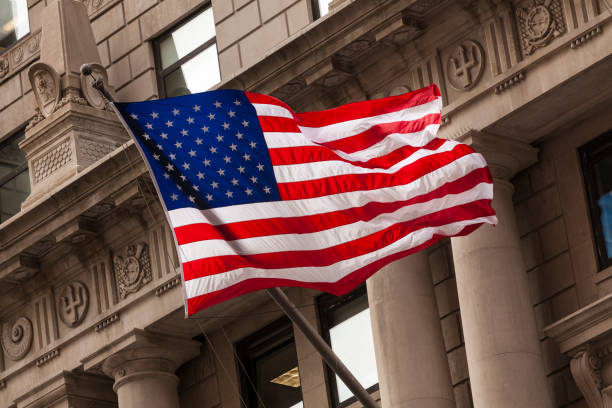COLUMN-Awaiting clarity from Trump, Europe steps up war preparations: Peter Apps

The opinions expressed here are those of the author, a columnist for Reuters.
By Peter Apps
LONDON, Feb 7 (Reuters) - NATO’s first major exercise this year, "STEADFAST DART", has seen its Allied Response Force (ARF) deploy 10,000 troops with accompanying aircraft, warships and well over 1,500 vehicles into southern Europe, not far from the borders of Ukraine.
They have been practicing over the past five weeks to be among the first forces to reach a future crisis.
Sometimes described as “SACEUR’s Private Army”, the ARF is designed to give NATO’s top commander on the continent - U.S. General Christopher Cavoli, the Supreme Allied Commander Europe (SACEUR), who also leads the U.S. European Command (EUCOM) - a fast-moving, agile force that can be sent wherever needed according to NATO war planning.
Aside from a handful of U.S. liaison personnel, the ARF contains no American military formations. Commanded by Italian Lieutenant General Lorenzo D'Addario, its troops come from nine NATO member states, with the largest force from Britain.
President Donald Trump and his team spent the first weeks of the new U.S. administration laying down what it wants to see from friends and allies – particularly increased spending on defence from European NATO members as well as Canada.
STEADFAST DART and other allied activity are in part intended to show that the alliance and its members have received the message.
NATO’s new “BALTIC SENTRY” operation – tracking shipping, aircraft and threats to essential infrastructure – is also almost entirely European, while new NATO member Sweden last month sent a battle group to reinforce Canadian-led forces protecting the small Baltic state of Latvia.
Europe’s most exposed nations hope a reputation for toughness will help keep them safe from Russia.
That includes growing talk of explicit threats that nations such as Poland would strike Russian territory immediately with newly acquired long-range rockets such as the US HIMARS if Kremlin troops crossed the border into any NATO nation.
Accompanying that are large purchases of weapons, construction of border defences and talk of a “drone shield” from the Arctic to the Black Sea.
The drama of Trump’s opening days in office, however, has abruptly stolen headlines.
That included reports of an allegedly “horrendous” conversation between Trump and Danish Prime Minister Mette Frederiksen over Trump’s idea that the U.S. might annex Greenland, a Danish territory.
He has also threatened tariffs on the European Union and NATO member Canada, which he has also said should become a U.S. state, though he later paused immediate Canadian tariffs.
On Monday, European leaders met for a summit in Brussels aimed at striking an uneasy balance.
Mainland European leaders do not want to look as though Trump is pushing them around, with talk of France and other EU states perhaps even sending troops to Greenland to protect it from U.S. seizure. At the same time, they want to stress that his message has been heard and keep U.S. support.
Trump says he wants all fellow NATO nations spending 5% of GDP on defence, more than any do today, including the U.S. at roughly 3.4 percent. Lithuania and Poland have committed to reaching 5% soon – but others may struggle to go far beyond the current 2% target without slashing other spending.
This week, there was talk that the European Union might finally relax its budget rules to enable members to spend more on defence – something that would make it considerably easier for them to allocate greater funding. But there was no official word on issuing European sovereign defence bonds - a move by the EU to borrow money specifically for arms.
"A lot has been done already but we need to do more," Antonio Costa, president of the European Council grouping EU government leaders, said after the Brussels summit. "We need to do it better, stronger, faster and we need to do it together."
Still, the relentless news flow from Washington keeps delivering sewing new divisions with the continent – the latest revolving around Trump’s idea to apparently empty war-torn Gaza of its Palestinian population to build a “Riviera” resort.
FORCING CONVERSATIONS
So far, aside from a handful of calls with European leaders – many of them days or weeks later than they might have hoped – the new Trump administration has been giving Europe a degree of “silent treatment”.
Last month, new U.S. Secretary of State Marco Rubio reportedly ignored a public invitation from Kaja Kallas, the EU foreign policy chief and former Estonian prime minister, to attend the monthly meeting of EU foreign ministers in Brussels either in person or by video.
“Trump is continuing to staff his administration with 'prioritisers',” said Rachel Rizzo, non-resident fellow at the Atlantic Council in Washington D.C., describing them as “those who believe the U.S. commitment to Europe is directly at the cost of our ability to project power elsewhere.”
Within Washington, there are discussions that the Pentagon might withdraw as many as two U.S. combat brigades – up to 10,000 personnel – from the European continent.
"There is also talk of the U.S. cutting back on the units and equipment it might use in mainland Europe – such as tanks and A-10 tank-busting attack aircraft – in favour of ships and drones to contain a rising China.
At the start of 2024, the U.S. military said there were around 80,000 American personnel in Europe, sometimes rising above 100,000 during major exercises or other regional activity.
“The concern is that there is going to be a gap as the U.S. draws down," said Rizzo. “That’s not a conversation the Europeans have been prepared to have – but it’s one that Trump will force.”
It is also a line new NATO Secretary General Mark Rutte has been pushing hard.
As prime minister of the Netherlands from 2010 until last year, Dutch defence spending barely nudged above 1.5 percent of GDP. This year, however, Rutte has repeatedly warned that Europe’s new situation means its nations must spend “much, much more than 2%".
"We must prepare for war," Rutte told Germany's mass-circulation newspaper Bild this week. "This is the best way to avoid war."
Within NATO’s existing structures, that is already happening – one advantage it enjoys over the EU, which lacks its own established military command chain.
But NATO’s existing plans remain U.S.-dependent, especially for critical “enablers” like logistics, electronic warfare and surveillance, intelligence and the command chain that would coordinate troops in battle.
Last year’s STEADFAST DEFENDER drills saw U.S. forces comprise up to 20,000 of the total 90,000 NATO troops involved, according to a release from U.S. European Command at the time.
NATO officials acknowledge the U.S. contribution is “substantial” but say the war plans are “flexible” for forces available at the time.
Yet even NATO’s top brass acknowledges that the broader conversations can be difficult, with the continent not yet used to thinking about existential conflict.
European concerns have been heightened by what officials say has been a concerted campaign of Russian-linked sabotage and other “hybrid” action.
Last month, a senior NATO official confirmed to the European Parliament long-reported rumours that U.S. and German authorities had thwarted a suspected Russian plot to assassinate the head of Germany’s largest arms manufacturer Rheinmetal.
But almost all European governments also face domestic political headwinds.
Germany’s elections on February 23 are likely to see the strongest performance yet from the far-right Alternative for Deutschland (AfD) party, although an alliance of other major parties will likely keep it out of power.
The anti-migrant AfD is backed publicly by billionaire Trump ally Elon Musk. Unlike Germany’s mainstream centre-right Christian Democrats – who will probably dominate the next governing coalition - the AfD opposes military aid for Ukraine, and might join a growing right-wing European bloc including Hungary and Slovakia more supportive of the Kremlin.
THINKING THE UNTHINKABLE
Trump has said he will end the Ukraine war more quickly, but leave longer security up to Europe to resolve.
That has prompted Franco-British discussions on providing potential peacekeepers, either from European nations or under a United Nations mandate using troops from countries such as Bangladesh and India – but there are real doubts over whether either approach can deliver long-term protection for Ukraine.
To make matters harder, Russian President Vladimir Putin has said he views NATO membership or troops commanded by the alliance on Ukrainian soil as a dealbreaker for any ceasefire.
Ukrainian President Volodymyr Zelenskiy has made clear his own scepticism towards a European-only force, this week suggesting that without NATO membership Ukraine might need its own nuclear weapons to survive.
On Monday, Trump added another new complexity - a demand that Ukraine give the U.S. access to its “rare earths” in return for ongoing U.S. security support, although it was a move that Zelenskiy appeared to welcome.
European nations have their own worries about a Ukraine deal, worrying that as soon as fighting stops the Kremlin – now spending as much as 40 percent of its budget on its invasion of Ukraine – will swiftly rearm.
That could be a precursor to another move against Ukraine – but Russia could also attack eastern or northern NATO European members, aiming to humiliate the alliance or break it up.
With NATO membership now increased to 32 nations, members such as Turkey and Hungary have sometimes blocked key decisions, often then forcing a concession from the U.S. or European partners on another topic. Such divisions might hamper a future military response to Russia.
Still, most agree that the amount of work going into making plans is unprecedented in recent European history.
Later this year, the annual STEADFAST NOON exercise will test allied air crews on one of the worst-case options NATO first built in the 1960s: its “nuclear sharing” protocols that would transfer U.S. nuclear warheads already held in bases in specific nations (currently Germany, Belgium, the Netherlands, Italy and Turkey) to those countries' air forces in the event of widespread atomic warfare.
Some countries take that threat more seriously than others, sometimes involving elements that were unthinkable until Russia’s 2022 full-scale Ukraine invasion.
Ministers in the Baltic states of Estonia, Latvia and Lithuania – which were annexed by the Soviet Union until 1991 – say the discussions have included evacuating huge swathes of their populations into other countries.
Some warn that multiple Western states farther from the front are still not taking matters seriously.
“They are waiting for a crisis and are not going to be willing to do what’s necessary until it happens,” one defence source said. But few dispute that on mainland Europe at least, the narrative is shifting.
“There is a switch to much more of a wartime mindset,” said former British Brigadier Robbie Boyd, formerly chief of staff to the last-but-one head of NATO’s Military Committee. “That is reflective of the state of mind in Europe.”





